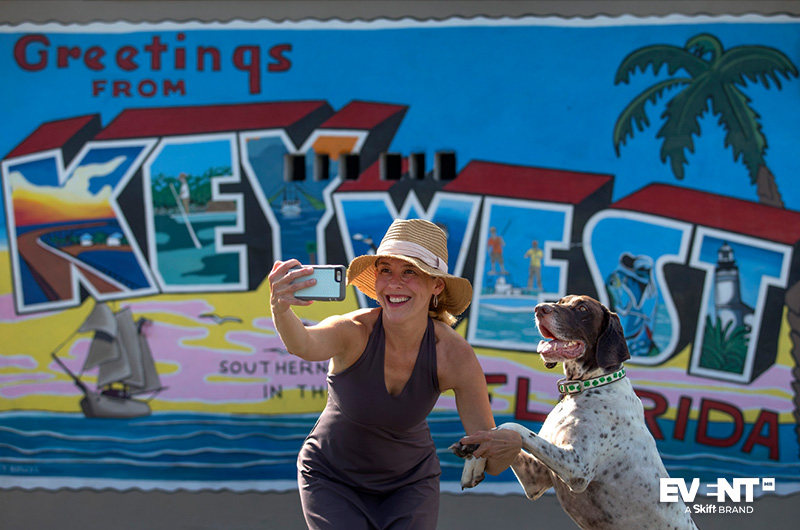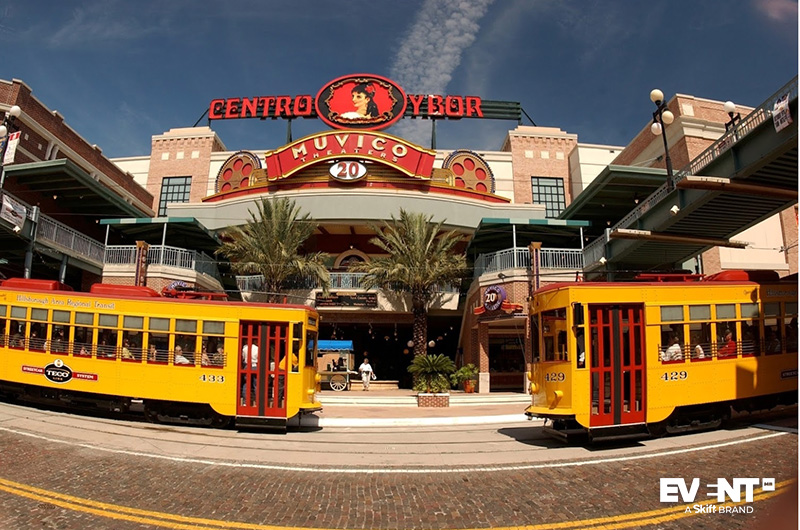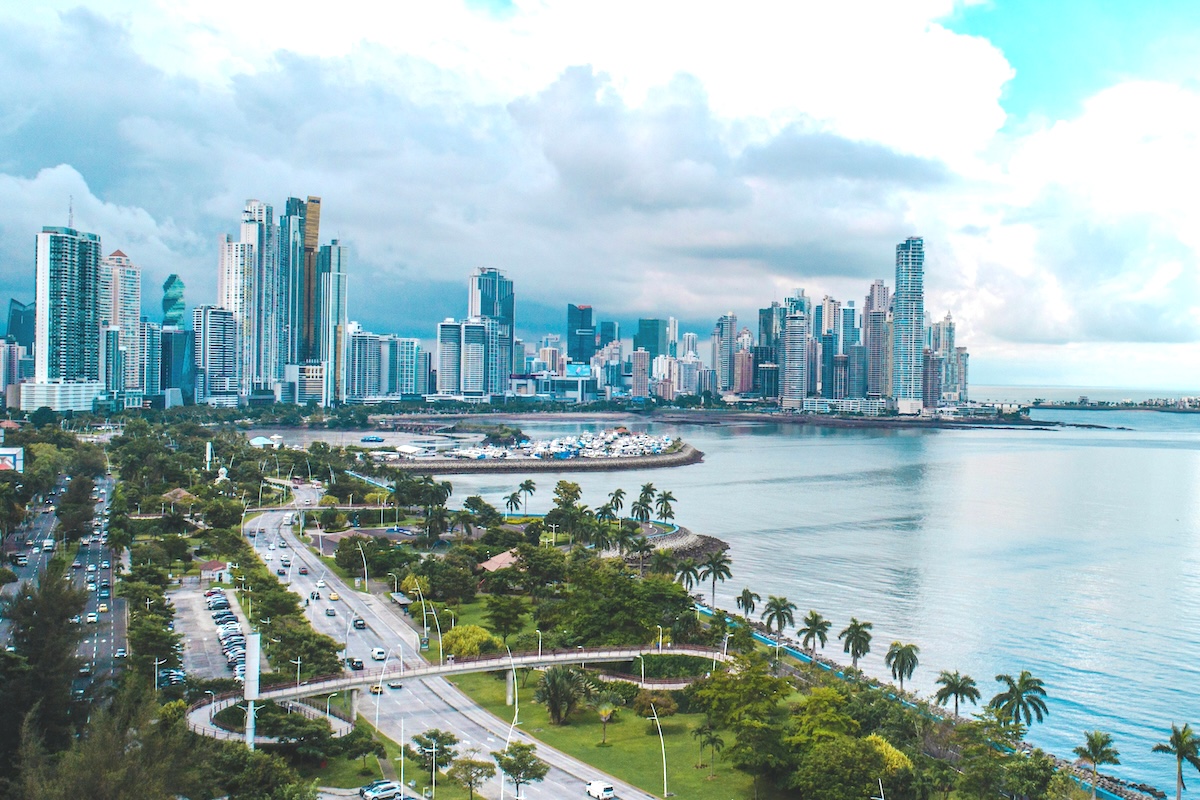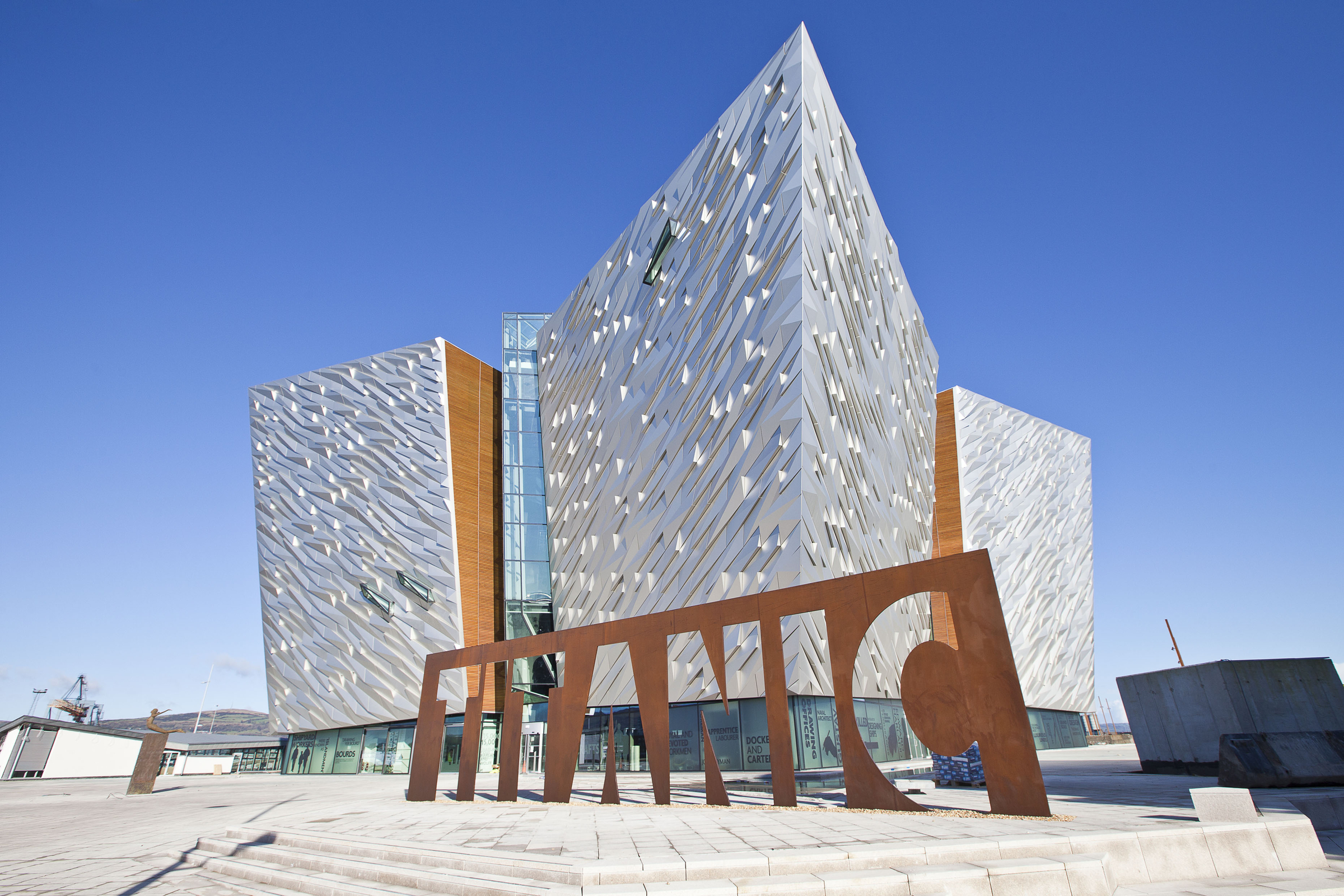Skift Take
Covid restrictions on crowds mean lower attendance numbers, but these necessities can lead to new possibilities for smaller destinations and venues. Small-scale options often offer more character in the form of an interesting event narrative.
Credits: VISIT FLORIDA, Peter W. Cross
Hybrid events require event planners to think like live TV producers: They need to create an experience that will be compelling for in-person participants as well as a virtual audience. And as any cinematographer will tell you, the setting — a sea turtle’s nesting ritual, a Florida beach’s role in the civil rights struggle — can make or break a scene.
Many of these settings are not only picturesque but come with interesting histories that underscore event themes and objectives. Oftentimes the venues and destinations with intriguing backstories are not state-of-the-art convention centers in the most cosmopolitan cities but smaller locations that may be a little off the beaten path.
If hybrid events offer new opportunities for storytelling, then smaller destinations and venues can amplify the narrative in two ways:
- Adding a historical or literary context.
- Enhancing the intimacy with guest speakers, giving in-person attendees and remote participants an ‘up close and personal’ perspective.
In fact, a more compact space can make it easier to manage TV-level production quality while generating a connection with the personalities driving the event content.
In this article, we spotlight three ways that the right destination can help smaller, in-person events generate a big impact.
Use Historical Context to Reinforce Event Themes
Choosing a destination with a rich history can add to an event’s thematic focus by giving a real-world dimension to key concepts. An event with a diversity, equity, and inclusion (DEI) theme, for example, can benefit from a location whose struggles and achievements are documented on the U.S. Civil Rights Trail. Ideally, the destination’s historical context should provide opportunities to pay homage to the community’s accomplishments while also acknowledging its struggles.
For example, Amelia Island on Florida’s northeast coast is the site where a group of Black entrepreneurs purchased 200-plus acres of Atlantic coastline in the mid-1930s — in the midst of Jim Crow racial segregation — and created a beachfront haven where the Black community could gather without fear of discrimination.
Abraham Lincoln (A.L.) Lewis, Florida’s first Black millionaire and the key mover behind the initiative, called this oasis American Beach. The Negro Motorist Green Book, for 30 years a trusted guide for Black travelers, included among its safe destinations this piece of Florida shoreline. In 2001, American Beach joined the National Register of Historic Places, and now it has its very own museum — which is currently closed due to the pandemic but remains a potential venue once it reopens.
Event planners organizing DEI meetings in this area can weave historical anecdotes into both the event program and livestream presentations. Further, planners can draw musical inspiration from the legendary performers who frequented the region during its heyday — Cab Calloway, Duke Ellington, Louis Armstrong, Ray Charles, and James Brown.
“American Beach is a part of our history; as a community, and as a tourism destination. When planners are considering where to book, that unique history is an important point. We’ve also been able to capture and share that in our AR app.”
– Gil Langley, president and CEO, Amelia Island Convention and Visitors Bureau
HOW TECHNOLOGY CAN ENHANCE THE EXPERIENCE
Innovative digital solutions can bring history to life with added layers of engagement for both in-person attendees and remote participants.
Amelia Island has developed a free augmented reality (AR) app that allows users to explore its attractions in greater detail. The app can enhance learning opportunities for in-person attendees and also engage virtual participants by adding an element of interactivity to their remote experience. Users can access 360-degree time lapse videos, as well as 3D animations that reveal explanatory material.
“The augmented reality feature of our app has been a wonderful addition to what we can offer meetings and conference attendees. During downtime, they’re able to explore and learn about our destination at their own pace and schedule, without incurring any costs; just a simple app download. The added value to meeting planners has been well received.”
– Gil Langley, president and CEO, Amelia Island Convention and Visitors Bureau
The app’s activations are triggered in person at select locations around Amelia Island or through images in the Amelia Island Visitors Guide. This guide could be mailed in advance of the event to virtual participants or sent to them as a pdf link. The 360-degree videos, in particular, can give remote users the impression of ‘being there’ by allowing them to pivot around a moving scene with their handheld devices.
Also, two resorts that neighbor American Beach, the Ritz-Carlton Amelia Island and the Omni Amelia Island Resort, offer technical services that support hybrid meetings. The combination of live streaming and AR resources can create new opportunities for integration. Breaks between sessions can be enhanced with images that trigger some of the app’s 3D animations or 360-degree videos.
Hosting an event in a destination like Amelia Island can help to ground some of history’s most important lessons, which attendees can absorb in first-hand experience. And while remote participants may miss the benefit of a tangible connection to the physical environment, technologies like AR apps can provide avenues for a more interactive, touch-activated experience.
Draw From America’s Rich Literary Heritage to Bring Destinations to Life
Many destinations have connections to literary legends — both to the stories themselves and to the people who lived them and wrote them. Whether a location served as the setting for or the birthplace of a famous novel, it can help attendees to feel connected to their favorite stories.
Locations with a connection to literary classics automatically lend themselves to a compelling event narrative, and smaller venues often have the most character — which in turn makes them ideally suited for an on-screen ‘adaptation’ in the form of a hybrid event.


Credits: VISIT FLORIDA, Patrick Farrell
In the Key West Historic District of the Florida Keys, the Ernest Hemingway Home & Museum is a prime example of how venues can add both historical and literary appeal to an event. The venue preserves the original architecture of the Spanish colonial villa where Ernest Hemingway lived and wrote some of his most famous works in the 1930s — Death in the Afternoon and To Have and Have Not among them. The house is surrounded by an acre of manicured gardens with several open spaces designed for outdoor seating; the grounds can normally accommodate up to 100 people.
Beyond thinking about the visual impact and maximum capacity of a space, it is also important to choose a literary theme that will have widespread appeal. The continuing popularity of Hemingway’s novels could generate a sense of shared cultural heritage among audiences across the US, and even the world.
Ideally, the location will be home to not just one celebrated figure, but an entire creative community. Inspired by her life in rural Cross Creek, Marjorie Kinnan Rawlings conceived her American classic The Yearling, which garnered her worldwide recognition and a state park that bears her name. The Key West region can lay claim to a long list of literary giants, including poet Elizabeth Bishop (whose former home is currently being restored by the Key West Literary Seminar), playwright Tennessee Williams (who has a dedicated museum close by the Hemingway home), and novelist Truman Capote. Further, the boutique Pier House Resort & Spa where Williams and Capote regularly wintered is still in service today.
Choosing a destination with multiple literary associations will give event planners the chance to create a sense of continuity between diverse perspectives — storied venues situated in close proximity will quite literally help to connect the dots. Sometimes referred to as a “creative cultural Mecca,” Key West continues to enjoy a thriving arts scene, with multiple Pulitzer-prize-winning authors and renowned literary scholars still calling the region home.
Finally, if the location and theme can also leave some room for recreation and whimsy, attendees will have a chance to unwind a little while still remaining engaged with the event’s content. The Ernest Hemingway Home & Museum, for example, is still home to polydactyl (six-toed) cats descended from Hemingway’s pets. Further, the author’s fascination with sport fishing could be used to introduce maritime-themed break-out activities like privately chartered fishing excursions.
HOW TO GET FULL PRODUCTION VALUE OUT OF SMALL VENUES
Just as smaller destinations sometimes provide insight into specific chapters of history, it is often smaller venues that are best able to conjure the distinct atmosphere of literature’s most compelling stories. Smaller venues tend to offer more architectural variety, and layouts that are both unusual and compact can make for especially interesting camera angles. A smaller floor plan translates to greater control over lighting, staging, and acoustics, streamlining production quality and a narrative theme.
The Ernest Hemingway Home & Museum’s website includes multiple images from past events that showcase different outdoor seating options and demonstrate how photogenic the arrangements can be.
在 Instagram 查看这篇帖子
Credits: Hemingway Home Events
A venue experienced with setting up WiFi connections and AV equipment is also an asset for anyone planning a hybrid event. The Hemingway Home & Museum has three webcams on the grounds running at all hours for anyone curious about its live streaming potential.
Consider Venues Outside the City Center to Explore Cultural Patchwork
Neighborhoods within larger cities can offer as much local flavor as a small town and often have interesting preserved historical buildings that offer unique insights into the cultural communities that helped found the city.
Ybor City, a historic district just north of Tampa’s downtown core, is a reminder of Tampa’s “Cigar City” heyday as well as a living testament to Florida’s vibrant Latin community.


Credits: Visit Tampa Bay
Ideally, locations chosen for their historical significance and cultural heritage will include multiple venues that exemplify the region’s characteristic charm — a particular advantage when constructing an event theme while coping with limited group sizes.
Ybor has several venues that retain the Latin-American architectural style originally introduced by the Cuban immigrants who founded the community. The Hotel Haya, a newly opened boutique property by the Aparium Hotel Group, maintains the historic architecture of its century-old structure while also offering amenities like AV equipment and live streaming support.


Credits: Visit Tampa Bay
The J.C. Newman Cigar Company, the oldest family-run cigar business in the United States, opened a new museum as part of recent renovations to its facilities, which include a meeting space experienced in hosting hybrid events.
The Columbia, founded in 1905, is Florida’s oldest restaurant. The Mediterranean Revival architecture resembles a Spanish courtyard and its nightly flamenco shows keep cultural traditions alive. Like the Hotel Haya and the Newman Cigar Company, the Columbia also has dedicated meeting spaces equipped with wireless internet access.
HOW TO LOCALIZE A HYBRID EVENT WITHOUT COMPROMISING VARIETY
By choosing a neighborhood with several thematically-linked venue options, planners have the advantage of being able to host multiple simultaneous events or event components in separate spaces — a plus for events that want to have multiple simultaneous tracks. The locations can be close enough that a single onsite team can prepare the logistical arrangements, but separate enough to minimize the risk of cross-contamination among attendees.
When the neighborhood is located just outside a big city center, planners will have the added benefit of being able to draw from the CVB for technical support with managing a hybrid event.
As Ybor City demonstrates, a community with a strong cultural identity can also help to create cohesion across multiple venues while also offering just enough variety to keep remote attendees engaged. These neighborhoods often combine the charm of a small town with the amenities of a cosmopolitan center.
Spreading out an event across several smaller venues could provide an interesting opportunity for virtual engagement. Encouraging ‘live’ attendees to interact with other ‘live’ attendees in other venues virtually will in turn integrate them better with the at-home audience by virtue of increasing adoption and engagement with the online event platform.
IN CONCLUSION
A compelling event narrative can go a long way to keeping both the in-person experience and virtual audience engaged. Smaller destinations and venues may actually be more of an advantage than a hindrance as compelling narratives thrive in rural hamlets, island communities, and pocket neighborhoods.
When planning a hybrid event, consider the following:
- Would the event theme benefit from a historic backdrop? If so, is there a destination like American Beach that can give attendees a stronger connection to this history?
- As Ernest Hemingway’s legacy confirms, a setting based on a classic literary or artistic figure can help to bring the event narrative or themes to life.
- Pocket neighborhoods like Ybor City can allow attendees to immerse themselves in the food, music, and architecture of a distinct cultural community while also offering multiple locations for more complex event programs.






